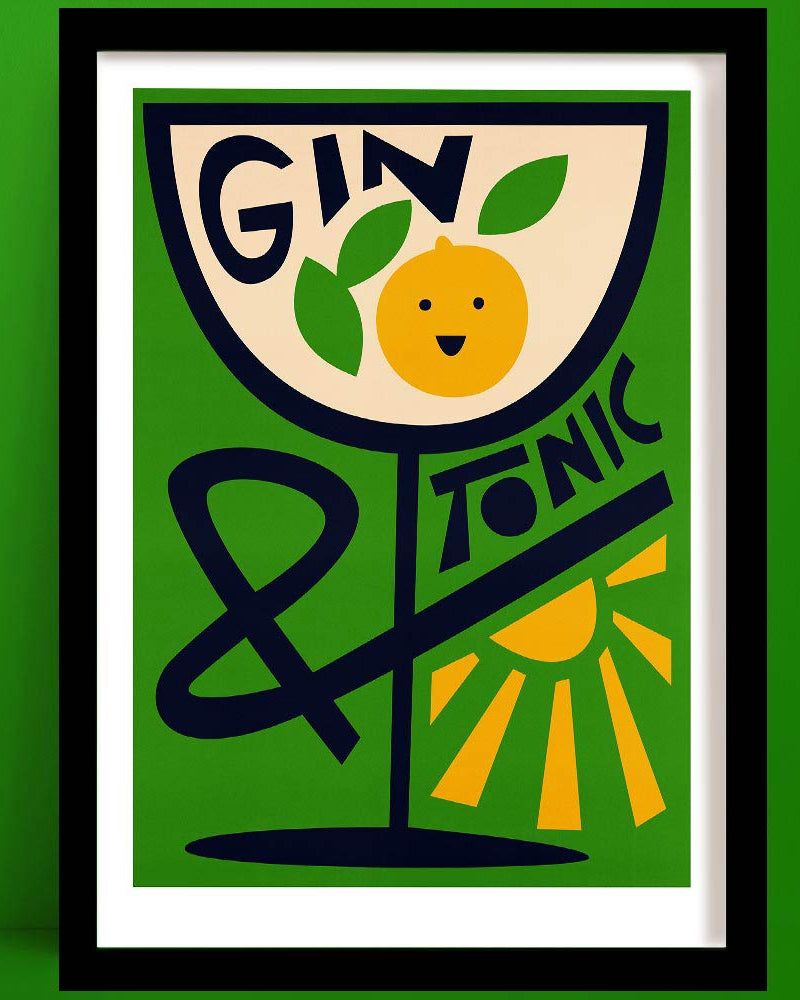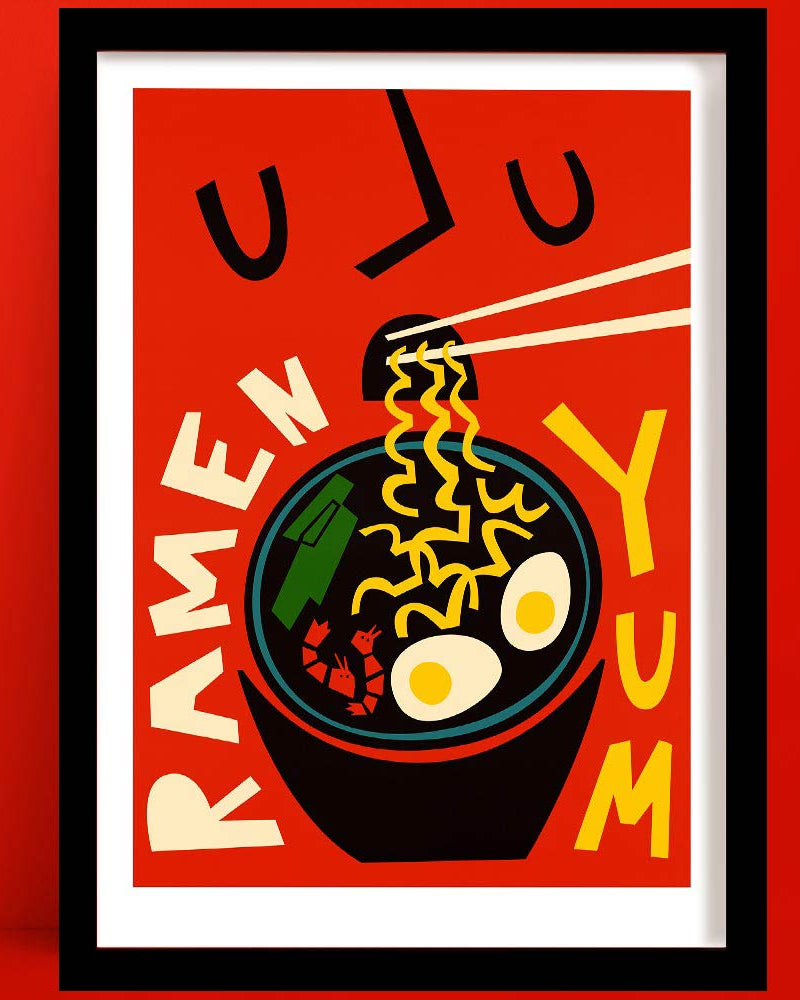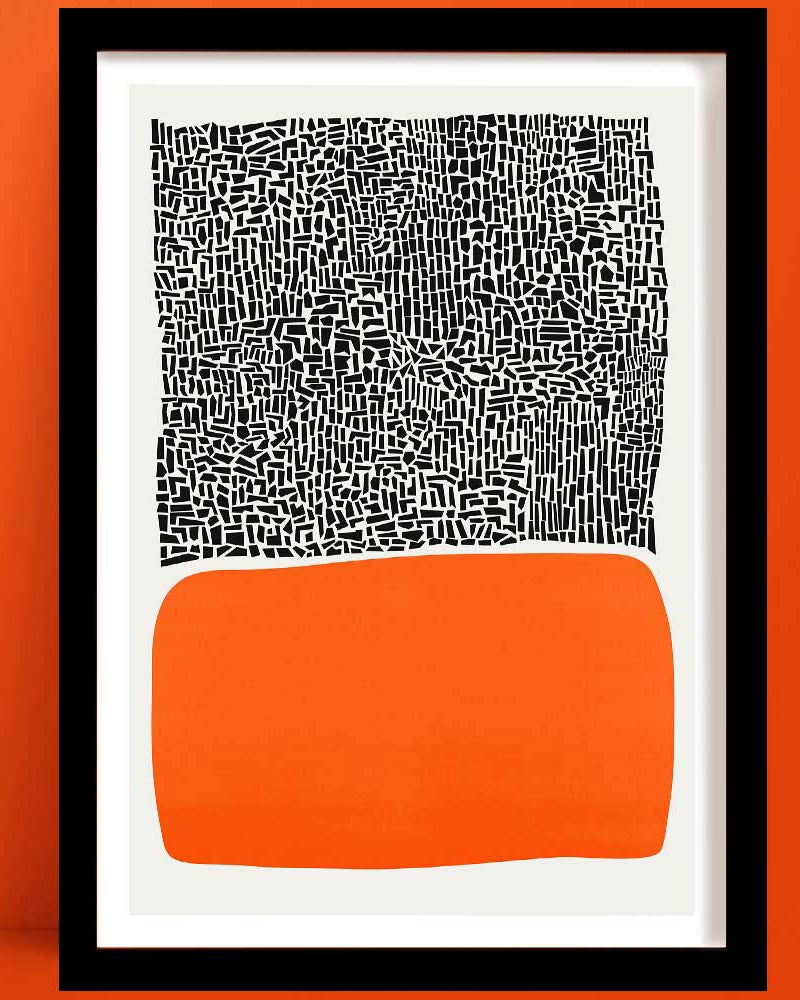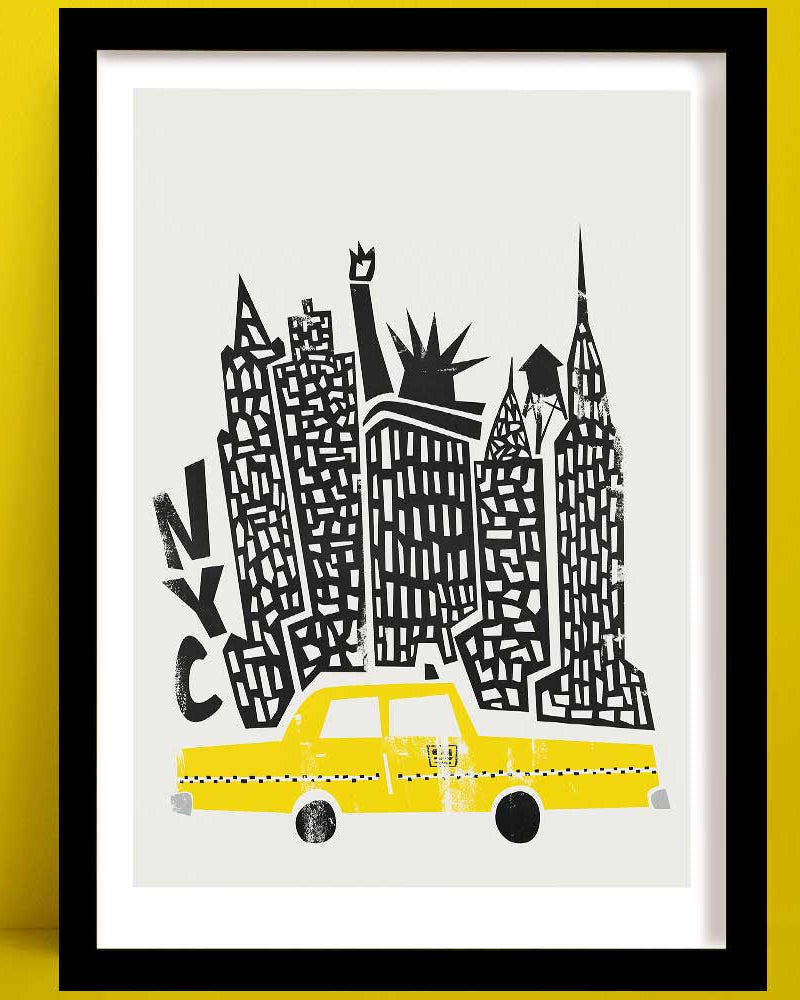It's easy to get overwhelmed by the sheer volume of mass-produced art available nowadays. You can still find high-quality, unique art online - and this guide is here to tell you what to look for.
How can I tell if an art print is high quality?
Good quality art prints usually show attention to both materials and process. Look for clues in the product description or ask the seller directly. Key signs include the use of premium-quality materials, giclée printing, and pigment-based inks - these all contribute to a print that stays vibrant over time.
All our prints use premium materials and are printed using a method called giclée printing, which ensures colour accuracy, longevity, and a high-quality finish.

What's the difference between Giclée Printing and Digital Printing?
Both giclée and standard digital printing are forms of digital printing — meaning they use a digital file which is sent to a printer, rather than a physical printing process (like screenprinting). But giclée printing is the superior method when it comes to both quality and longevity.
-
Giclée printing uses a specialised inkjet printer with up to 12 different pigment-based inks. These high-quality inks produce rich, accurate colours and crisp, precise details. Giclée prints are almost always made using museum-quality materials - ours included.
- Standard digital printing includes a wide range of printers — from everyday desktop models to large commercial machines used for posters or packaging. Most of these use four basic ink colours (CMYK) and cheaper dye-based inks which can fade over time. Digital printing isn’t necessarily poor quality - some digital prints can be excellent - but they often can't capture the same depth of colour as giclée prints. This method is widely used for things like flyers, advertising posters, movie prints, and magazines, which are intended for shorter use, rather than a piece of art that you want to keep in your home long-term.
Do I need to worry about whether the art is archival or not?
Most artists (like us) are extremely picky about the quality of the materials which they use to reproduce their work, and high-quality materials (even if they aren't technically classed as archival) will usually still look amazing for decades when properly cared for.
Sometimes you will encounter artwork which has been made with materials that weren't made to last. A great example is vintage posters, especially movie or advertising prints. These were almost never made with archival materials, but they are still gorgeous pieces of art. Another example is collage art, which often uses found materials (like magazine cutouts or vintage paper) that weren’t made to last. These are a couple of instances where the inherent beauty of the work outweighs the inevitable changes that will happen to it over the years.
If you want to ensure that your art will last, there are a few simple steps you can take:
- Use UV-protected glazing – UV light is a major cause of fading.
- Add a mat (mount) – this creates space between the artwork and the glazing, protecting the surface.
- Seal the back of the frame with framers tape – this helps prevent damage from humidity and dust.
- Avoid direct sunlight – even archival pieces benefit from this.
Careful framing can go a long way toward preserving any artwork.

How to do I avoid buying stolen or AI-generated art?
If you’re buying art online, especially from a marketplace, it’s worth doing a quick check to make sure the work is genuine — made by a real artist, not generated by AI or copied without permission.
Here are a few things to look for:
- Is the artist credited? If the artist isn't named, then there is a good chance that the work is stolen.
- Check for artist info Most genuine artists include an About page on their website or shop. It doesn’t need to be lengthy, but it should tell you something about who they are, how they work, or what inspires them.
- Check on the artist's social media page Usually artists will have a list of places where their work is exhibited or available for purchase. If the site or shop you’re looking at isn’t mentioned, you can message them directly to confirm whether it’s legit.
- Look for a consistent style Does the shop feel like it’s all by one person? Or is it a mix of totally different styles vintage Van Gogh reproductions next to Yayoi Kusama exhibition posters next to “originals”? If it looks like a random collection, there’s a good chance it’s not a genuine artist’s shop. Some artists do experiment with a huge range of styles, but this is the exception not the norm.
- Consider the volume of work Even the most prolific artist won’t have 10,000 artworks for sale. An unrealistically large number of listings often means that at least some of the pieces are stolen or AI-generated.
- Do a reverse image search If you find a work that you like but it's not clear if the seller is the original artist, a reverse image search can often lead you to the original artist (and authorised sales channels)
What if I find out that the art has been stolen?
Please tell the artist! We always always always appreciate someone taking the time to let us know that someone has stolen our work, so that we can then take action to get it removed. We even have a special discount code just for people who notify us. And it's always lovely to hear from you.




